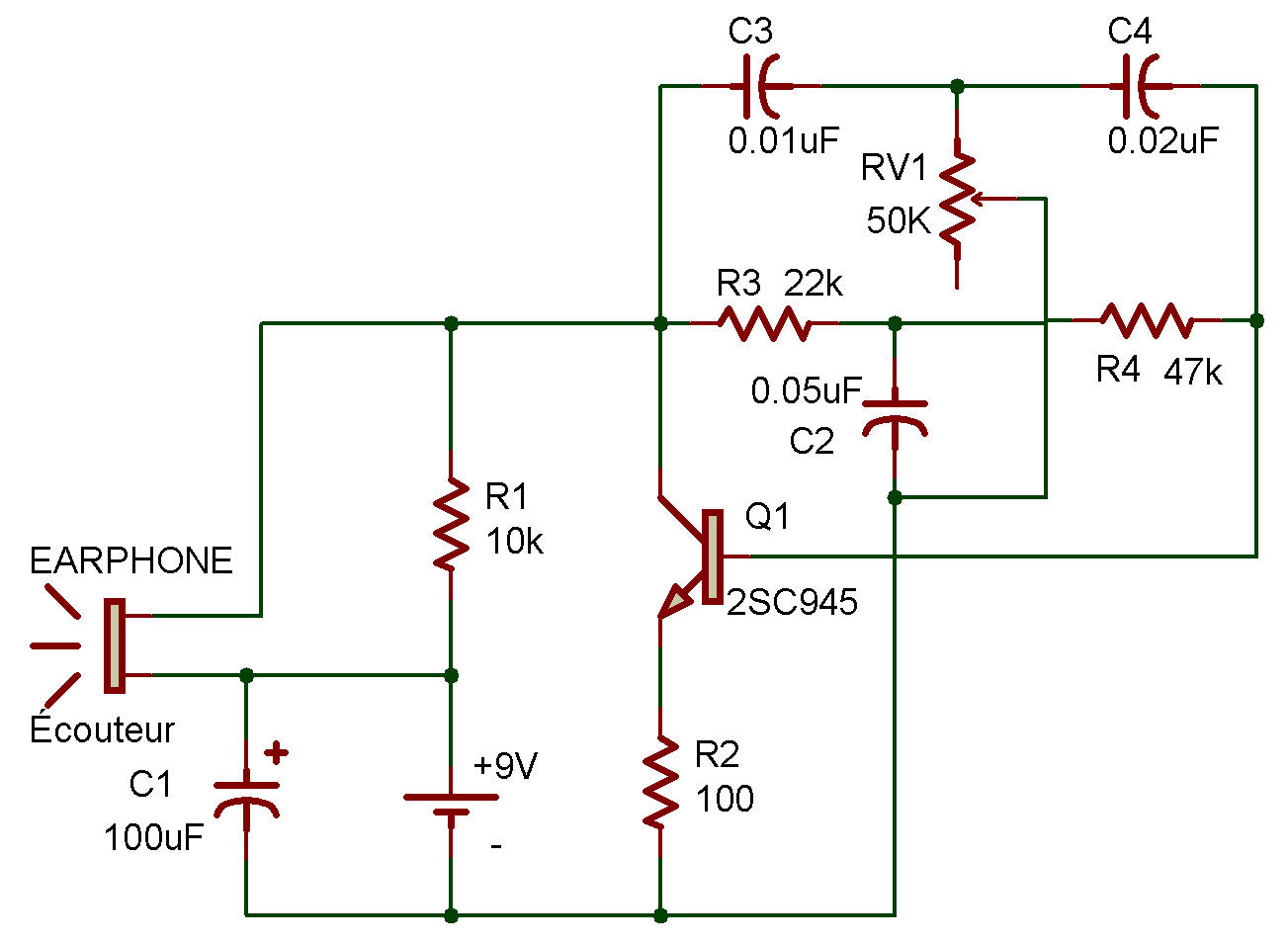

Twin-T Audio Oscillator

The purpose of this project is to study a twin-T type audio oscillator. Because of its stability, it is very popular for such things as electronic organs, electronic test equipment, etc.
The frequency of the oscillations depends on an accurate choice of Resistors and Capacitors in the twin-T network. The letter "T" comes from the Schematic diagram arrangement of the Resistors and Capacitors. The term "twin" comes from the fact that there are two T networks, which are paralleled or bridged across each other.
The 2SC is a class A amplifier as far as DC bias and signal level are concerned. The collector is supplied voltage through the 10K Resistor.
The 22K and 47K Resistors supply the base bias current as well as functioning as part of the twin-T frequency determining network.
The 100 ohm Resistor is included to help obtain a high input resistance at the base of the Transistor and to reduce distortion. The six RC components in the twin-T network all contribute to the unique characteristics of this circuit.
That is, the signal that results from oscillation action is the only signal that can get through this network with the proper phase to sustain oscillations. The circuit must be carefully adjusted to obtain pure sinewave output. Adjust the Control very slowly over its entire range until you hear a tone in the Earphone. The tone will be very low and resemble the lowest note of a large pipe organ. This Control setting should be between 7 and 10 on the dial.
Once oscillation has started, adjust the Control carefully for the setting which gives the purest sounding low note near the high end of the dial. The circuit cannot tolerate much of a load, therefore the crystal Earphone is ideal (as it does not present much of a load to the circuit).
You can experiment with this circuit in many ways. We suggest you try different values for the 10K and 470 ohm Resistors, and try using higher and lower Battery voltages. Also, if you have a VOM, try measuring circuit voltages.
